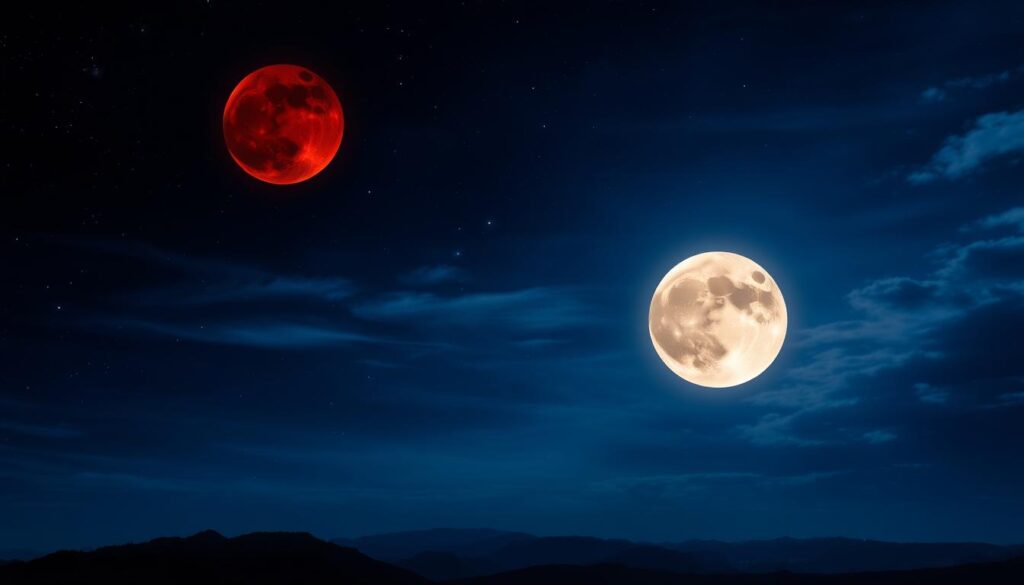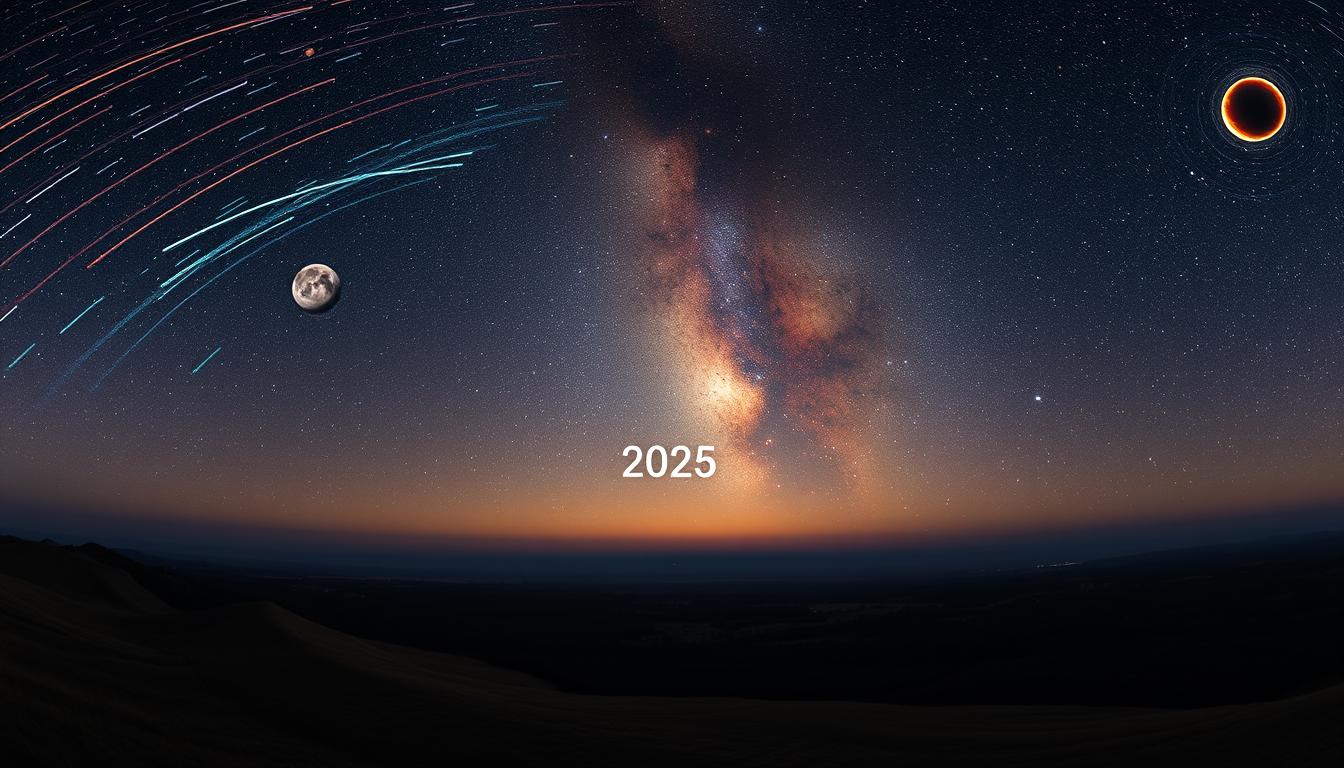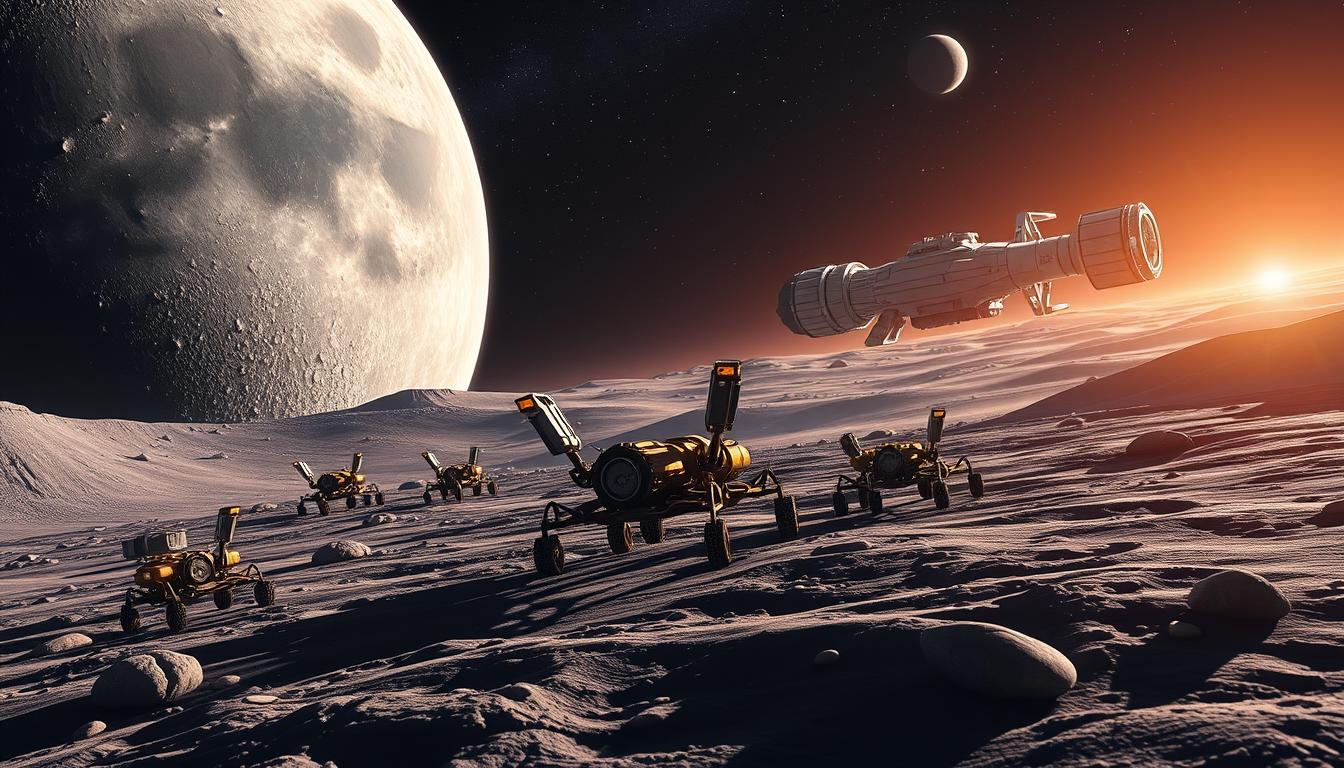As we enter 2025, skywatching fans have a lot to look forward to. This year, we’ll see many amazing celestial events. From beautiful meteor showers to stunning lunar eclipses, it’s going to be an incredible year.
The sky will light up with the Quadrantids, Perseids, and Geminids meteor showers. It’s the perfect time to grab a blanket and look up at the stars.
NASA also has big plans for 2025. They’re sending missions to the moon to learn more about space. Whether you’re new to astronomy or have been watching the sky for years, 2025 is full of opportunities to see the wonders of the night sky.
Key Takeaways
- 2025 features a thrilling lineup of celestial events including meteor showers and lunar eclipses.
- NASA’s planned lunar missions will enhance our understanding of space exploration.
- Skywatching in 2025 offers unique opportunities for both novices and seasoned astronomy fans.
- Catch the exciting Quadrantids, Perseids, and Geminids meteor showers throughout the year.
- Various astronomical phenomena are set to create breathtaking views in North America.
Exciting Meteor Showers to Witness in 2025
In 2025, skywatchers will see amazing meteor showers. The Quadrantids, Perseids, and Geminids are the highlights. They offer great views for everyone.
Quadrantids Meteor Shower – January 2025
The Quadrantids Meteor Shower peaks in early January. It’s a spectacular sight. You might see over 100 meteors per hour.
These meteors will light up the sky with their trails.
Perseids Meteor Shower – August 2025
The Perseids Meteor Shower lights up the sky in August. It’s known for its bright meteors. The peak nights offer the best views.
This shower is a top pick for 2025. You’ll see many meteors with glowing trails.
Geminids Meteor Shower – December 2025
The Geminids Meteor Shower is one of the brightest. It happens in December. With a waning moon, you’ll see over 100 meteors per hour.
This shower is a must-see in 2025. It shows nature’s beauty in the dark sky.
| Meteor Shower | Peak Dates | Meteor Rate (Per Hour) | Best Viewing Conditions |
|---|---|---|---|
| Quadrantids | January 3-4 | Up to 100 | Clear skies, minimal light pollution |
| Perseids | August 12-13 | Up to 60 | Clear nights, away from city lights |
| Geminids | December 13-14 | Up to 120 | Dark skies, favorable moon phase |
Lunar Events: Eclipses and Supermoons
2025 is going to be a great year for those who love the stars. We will see amazing lunar events like eclipses and supermoons. These will let us see the sky in a new way. Here are some highlights for those who want to see these amazing sights.
Total Lunar Eclipses – March and September 2025
There will be two total lunar eclipses in 2025. The first is on March 14, and the second on September 7. The March one will be seen in many places in the United States. It’s a sight you won’t want to miss.
During a total lunar eclipse, the Earth blocks the Sun’s light from reaching the Moon. This makes the Moon look deep red, like a “blood moon.” It’s a rare sight that makes the Moon even more special.
Supermoons to Look Out For in October 2025
October 2025 will bring a supermoon that’s very close to Earth. It will be the closest full moon of the year. The moon will look about 30% brighter than usual.
Supermoons happen when the Moon is at its closest point in its orbit. We see three or four supermoons every year. This one will be the last supermoon of 2025, making it very special.

Planetary Alignments and Sightings
2025 is a great year for seeing amazing things in the sky. People can watch Venus, Mars, Jupiter, and Saturn. They can also see a partial solar eclipse. These sights show us how beautiful and complex the universe is.
Visibility of Venus, Mars, Jupiter, and Saturn in January 2025
In January 2025, you can see Venus, Mars, Jupiter, and Saturn in the sky. The Venus Mars Jupiter Saturn visibility will be at its best. This makes it easy to see these planets after sunset.
Each planet will be easy to spot in the evening sky. This is a great chance for those who love to look at the stars.
Partial Solar Eclipse – March 2025
On March 29, 2025, there will be a partial solar eclipse March 2025. People from different places can see this amazing event. A partial eclipse shows the sun’s power and creates beautiful sights.
This event is a highlight of planetary sightings 2025. It shows us how the planets move and the special moments in our solar system.
Space Missions and Their Significance
As we get closer to 2025, space exploration is growing. We have new lunar missions and trips to other planets. The Blue Ghost Mission and Lunar Trailblazer are two big ones. They will help us learn more about the Moon and why space is important.
Upcoming Lunar Missions – Blue Ghost and Lunar Trailblazer
The Blue Ghost Mission will send a special lander to the Moon. It will do cool science experiments on the Moon’s surface. This will help us learn about the Moon’s geology and find resources for future humans.
The Lunar Trailblazer is looking for water ice on the Moon. Water is key for humans to live long on the Moon. Finding where water is will help us explore the Moon more.
Europa Clipper Mission Overview
The Europa Clipper mission will go to Jupiter’s moon, Europa. It will check if there’s water under the ice. Scientists think this water might have life. This mission will help us learn more about Europa and space.
| Mission | Objective | Launch Date |
|---|---|---|
| Blue Ghost Mission | Conduct scientific research on the Moon’s surface | 2025 |
| Lunar Trailblazer | Search for water ice on the Moon | 2025 |
| Europa Clipper Mission | Study Europa’s potential for life | 2024 |
These missions show we’re serious about exploring space. They help us learn about the universe. They also inspire young people to become scientists and keep exploring.
Net Neutrality Rules Struck Down by Appeals Court
The U.S. Court of Appeals made a big decision. It changed how we use the internet. This ruling means big changes for how we access the web.
The court said the FCC can’t control how fast internet works. This is because the FCC’s rules were seen as too strict. This affects not just internet providers but also mobile users.
Impact on Scientific Research and Communication
This ruling worries scientists a lot. It makes it harder for them to share important research. Before, scientists could easily work together thanks to open internet rules.
Now, scientists might have trouble getting the info they need. This could slow down new discoveries. It also makes it harder for the public to learn about science.
Conclusion
Looking ahead to 2025, we see a year full of amazing sky events. We’ll see great meteor showers and stunning lunar eclipses. Events like the Quadrantids in January and the Geminids in December will be perfect for sky watching.
Also, planets like Venus, Mars, Jupiter, and Saturn will be easy to see. This makes the year even more special for those who love the stars.
Space missions like the Lunar Trailblazer and the Europa Clipper are very important. They will help us learn more about space and our solar system. This is great for science and discovery.
But, we also need to think about how net neutrality affects science. Changes in internet rules could change how we share and find information. It’s important to keep up with these changes for those who love the stars and science.


